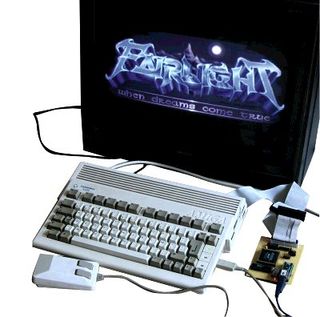Let's get cracking
The fascinating story of how software piracy became an art form
Ironically, it was the challenge of figuring out how the copy protection worked, and how it might be disabled, that spawned the cracker scene. These proto-pirates left their mark, like dogs peeing on lampposts, in the form of colourful introduction scenes: crack intros or ‘cracktros’. “Being a cracker soon became a source of pride, and the best names were known worldwide,” says Tamas Polgar, author ofFREAX - The Brief History of the Demoscene, a book about the history of cracking.
By the mid ’80s - the time of the Amiga and the Commodore 64 - crackers were organised into large crews that could distribute their wares without much difficulty. Europeans mostly spread their releases by mail, while Americans used modems and bulletin board systems (BBS) because of cheaper phone rates in the US. This resulted in a serious division in standards, explains Polgar. “European crackers achieved a higher quality because they had time to get the original software in the morning, work on the crack all the day, let the C64 compress it during the night, and mail it the next morning. American crackers did not have time. They had to do it quick, and sometimes dirty, because the competition could upload work to a BBS at any time.”

Today, speed and quality remain the main areas of competition among cracker crews: “Pirate scenes have always been highly competitive,” continues Garrett. “It’s competition, not free software, that is often the driving motivation for top pirates. Over the years the computer systems, participants and group names change, but the goal is always the same: to release the product in an acceptable form and to do so before anyone else.”
During the height of the cracktro era, the scene split into two groups: pirates proliferated warez, while demoscene programmers stayed on the right side of the law. These cracker cousins use game graphics, animation and music to create non-interactive videos, running in real time on PCs - art gallery cracktros, in essence. “A demogroup is usually made of a programmer, a graphic designer, a musician and a 3D and 2D animator,” says Stephanie Cornilleau fromDemoscene.tv.
Sign up to the GamesRadar+ Newsletter
Weekly digests, tales from the communities you love, and more
Most Popular


